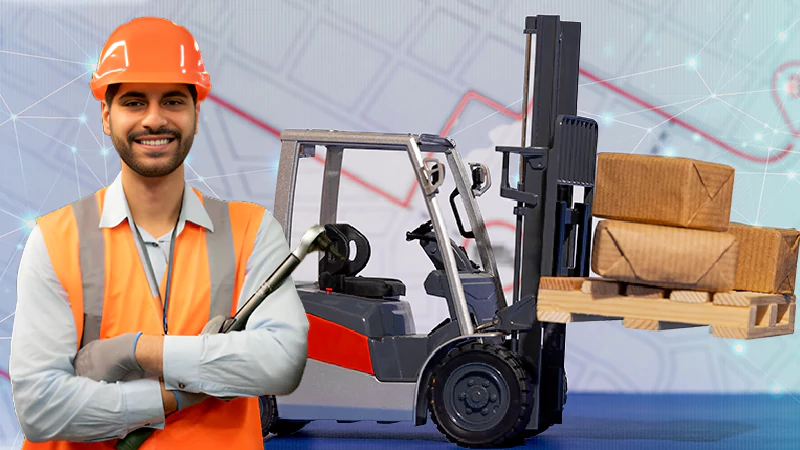Key Scissor Lift and Cherry Picker Features to Look For

As work projects and operational needs expand to greater vertical heights, the use of specialized aerial access equipment has become pivotal to productivity success and worker safety. The two most common equipment options to attain temporary working elevation – scissor lifts and cherry pickers (also known as articulated boom lifts) – provide critical assisted-access capabilities for various worksite environments and tasks at height. Each platform brings unique configurations and attributes to suit varied scenarios.
Properly evaluating key features and considerations around area accessibility requirements, workspace dimensions, surface conditions, safety priorities and more allows managers to select equipment tailored exactly to project scope and work crew needs. Taking a strategic approach also enables accurate budget forecasts accounting for the total cost of ownership based on purchase costs, rental rates, maintenance, training investments, and projected utilization.
Let’s dive deeper into guiding decision factors and details on scissor lifts versus cherry pickers so your worksite can make the ideal aerial lift fleet purchase and rental choices.
Key Differences Between Scissor and Boom Cherry Picker Lifts
At the most basic construction, scissor lifts provide vertical elevation through an attached platform lifted in a straight rising motion via a connected scissor mechanism underfoot. This keeps the work surface completely level at all times.
Cherry pickers earned their moniker from the articulating arm allowing the lifts bucket attachment to swing exactly to target work positions like plucking fruit. The arm can be manipulated independently from the base lift providing greater versatility to reach over obstacles. The attached bucket though, unlike scissor platforms, shifts angle as the arm moves – requiring greater balance and training.
Platform Size Capabilities
Scissor lifts can safely accommodate 1 to 2 workers plus gear and materials weighing up to thousands of pounds. Standard platform deck space ranges from around 30 to 50 inches wide. Extending ladder racks, panel cradles, and other bolt-on accessories can provide extra vertical storage as well. Low-clearance compact narrow track lifts fitting through tight access spaces are an excellent specialty option.
Bucket lift platforms are smaller – designed typically for only 1 or 2 occupants. Capacities between 250 to 650 lbs are average, with the highest limits tapering as the boom arm extends outward due to stability factors. Choosing customizable buckets however allows standing platforms, benches, and buckets from 2 x 3 feet upwards of 8 feet. Larger buckets equate to heavier loads reducing reach – so balance needs appropriate.
Maneuverability & Accessibility Range
Both lift types normally operate via battery-powered electric motors emitting zero exhaust emission – ideal for indoor and enclosed space use versus gasoline or diesel fuel options. Self-propelled unit controls often toggle between front-wheel, crab steering or coordinated mode to maneuver tight corners whether driving a scissor or boom model. Or choose manual pump or push-around models requiring a secondary operator guiding movement from the ground – beneficial for congested sites with limited steering visibility.
Standard scissor lifts safely provide roughly 12 to 50 feet of platform height for overhead work access. Yet units do max out reach and height so verify your full range requirement plus any protruding components to prevent topping out unstable.
Cherry pickers lift delivers far greater aerial reach capacities than scissors lifts through their telescoping multi-segment boom arms. Horizontal spans averaging between 34 to 55 feet distance are normal from the center lift shaft to outer bucket limits – with specialty custom equipment even extending upwards of 135 feet for niche heavy industrial projects! Just confirm stability factors allow the number of occupants needed to perform work safely at various boom positions.
Design Configurations Suited to Terrain
Standard scissor lifts include slab-style units meant primarily for hard-level surfaces such as concrete shop floors or blacktop lots. Rough terrain and four-wheel drive platforms allow navigating loose dirt, gravel, and uneven sites through higher ground clearance, grippy treaded tires, and pivoting axles. Specialty options like extra outrigger legs or continuous turntable design provide advantages like stability on drastic slopes or positioning flexibility.
Whether you’re maneuvering over pavement or off-road terrain, cherry pickers have got you covered. Standard wheeled models handle flat surfaces just fine, though minor hills and dips may impact reach. When navigating unpredictable landscapes is part of the job, opt for all-terrain or true off-road booms. Their foam-filled tires grip mud, while sealed components withstand dust and moisture. Condensers placed away from engines hold up in heat. The goal is reliability, even in marshes, deserts, or any less-than-ideal site conditions. Careful feature selection means you can focus on accessing tough-to-reach work areas, without worrying about getting stuck.
Safety & Technology Innovations
Recent lift upgrades employ sensor innovations to get ahead of worksite hazards. Features like specialized descent and cutoff motions, plus alarms combat instability. By preempting risk factors, safety moves beyond reactive to predictive. Accessories further support profitable uptime, with weld screens, spotlights, and power outlets keeping operators focused.
Sustainable offerings also use cleaner technologies like hybrid electric engines to reduce diesel dependence. Alternative fuel sources cut emissions impacting workers and communities. Companies investing in the latest responsible equipment signal priorities that consider wider stewardship.
It’s wise for both managers and those in the bucket to welcome modern aids that prevent problems in the first place. New lift safety and efficiency advances make outdated levers and alarms seem crude as a comb fighting tangles over a brush. Though added complexity requires more training and care, sensor-triggered stability controls qualify as an intelligent multi-tine design.
Conclusion:
Choosing the right aerial lift means methodically matching equipment to workspace and site conditions. Start by reviewing vertical reach needs and what terrain or accessibility hurdles exist. This informs lift type and capability required, without overspending on unneeded capacity. The goal is to align lift performance tightly with maintenance and construction scope, enabling crews to conduct overhead tasks efficiently.
Strategic rental or purchase decisions come down to calculations, not guesswork. Consider duty cycles, then optimize operating costs against production targets. Carefully evaluate options for responsibly scaling equipment to project requirements instead of overbuying “just in case”.
Correct lift choice empowers crews to work safely at height with minimal repositioning. But inadequate or excessive capability leaves them stranded or overextended. So rely on objective analysis, not assumptions. The platform picked should set operators up for success. When precise planning and preparation elevate outcomes, crews can get the job done right the first time.
Follow Us
Latest Post















